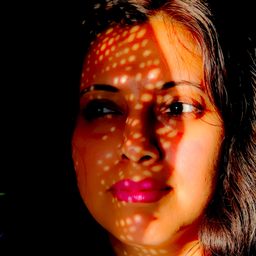- Home
- /
- spirits
- /
- vodka
- /
- henrys special
Henry's Special
Darker the drink the worst is the hangover
MOREDarker drinks like Rum or Red Wine or any other drink that has a colour, contain more residues of the original fruit, grain or corn, and these residues are known as congeners.
Congeners are chemical compounds like tannins, histamine and aldehydes. Congeners impart the unique flavours that these liquors or wines have, which you'll miss in white or colourless liquors like Vodka, but at the cost of heavy hangovers.
Congeners compete with alcohol when metabolism is concerned and might slow down the metabolism of alcohol and result in the alcohol staying in the blood for much longer. In addition, congeners stimulate the body to release stress hormones like norepinephrine and epinephrine which can add to the hangover.
Henry's Special
- Champagne 9 cl
- Brandy 1 cl
- Grapefruit Juice 3 cl
- Honey 1 tsp
- Lemon Juice 1 tsp
Any Glass of your Choice

Henry's Special Ingredients
Champagne,Brandy,Grapefruit Juice,Honey,Lemon Juice,
Henry's Special Recipe
Shake briefly with a glassful of broken ice, in a double-cocktail glass. Add champagne, and serve.
Champagne
Champagne is a sparkling wine produced in the Champagne region of France. Modern champagne is guided by the rules of appellation, which is a legally defined and protected geographical indication primarily used to identify where the grapes for a wine were grown. The grapes Pinot noir, Pinot meunier and Charodonnay are used to produce champagne.
Much ahead of the creation of the sparkling wine, still wines from the Champagne region were known since Medieval France. The Romans established vineyards in the Champagne region and these vineyards started to produce a light, fruity red wine that was a contrast to the heavier Italian brews.
Later Church owned vineyards started producing wines for ceremonies and festivities like the coronation, but the wine makers of Champagne were envious of the reputation of their neighbouring Burgundy wine makers, but the cooler climate of Champagne was a challenge to the production of red wine, and the grapes would struggle to ripen fully, and would have bracing levels of acidity and low sugar level, that would result in lighter and thinner red wines.
The oldest record of sparkling wine is Blanquette de Limoux, a wine invented by Benedictine monks in the Abbey of Saint-Hilaire, near Carcassone. Sparkling wine is created by bottling the wine before the fermentation has ended and another method is by addition of sugar and yeast to trigger a second fermentation in a finished wine.
However, despite the accidental invention of sparkling wine in France outside the Abbey, and despite recording of the in bottle second fermentation process of a finished wine been recorded in the Abbey of Saint-Hilaire by English scientist Christopher Merret in 1662 and noted as a process in use by the Benedictine monks since 1531, wine makers in Champagne were unable to use what is now known as the méthode traditionnelle or particularly méthode champenoise in Champagne until the 17th Century.
This was because glass manufacturing in France was not advanced enough to manufacture bottles that could withstand the internal pressure of the carbonation process. They used Méthode rurale, the early method used by the monks that created Blanquette de Limoux, in which the wine is bottled before the first fermentation is finished, and the yeast sediment after fermentation remains in the bottle.
The méthode champenoise which alternatively is known as méthode traditionnelle outside Champagne uses a second fermentation by adding a little sugar and yeast and then the sediment is slowly removed after an elaborate process of riddling and then disgorging, a process of removing the lees, the sediment that has settled at the neck near the cap of the inverted bottle.
So, in short, sparkling wines are produced outside Champagne too, and like Limoux can be of exquisite quality, but the Champagne due to early clever marketing, became associated with royalty in the 17th, 18th, and 19th centuries and thus became a popular drink for the middle class too. Which created the legend of Champagne and now, with successful Geographical Indication Appellate, Champagne as a name and the name méthode champenoise can only be used by Champagnes that meet the requirement of the Appellate, and are from Champagne and Champagne only.Brandy
Brandy, simply put, is a distilled wine. It is categorised under Distilled Alcoholic Beverages along with Whiskey, Rum, Gin, Vodka and Tequila, but it's in a way a cross connection between Fermented liquor and distilled liquor. A Brandy typically containts 35% to 60% Alcohol by Volume ( 70-120 US proof ) and is usually consumed as an after dinner digestif.
Although Brandy is generally classified as a liquor produced by distilling wine, in a broader sense, this encompasses liquors obtained from the distillation of either pomace ( the soild remains of grapes after mashing and extraction of juice for wine making ) or fruit mash or wine.
It may be noted that Brandy like Gin is also one of the original Water of Life or eau de vie, carried over from the medieval tradition of an aquaous solution of ethanol used as a medicine.
The history of Brandy is closely tied to the development of commercial distillation in and around the 15th Century. In early 15th Century French Brandy made way for a new cross-Atlantic trade or Triangle Trade and replaced Portuguese Fortified Wine or Port from the central role it played in trade, mostly due to the higher alcohol content of the Brandy and ease of transport. However by the late 17th Century, Rum replaced Brandy as the exchange alcohol of choice in the Triangle Trade. More info on Wikipedia for the interested Brandy aficionados. Note that an Apricot Brandy can refer to the liquor (or Eau de Vie, Water of Life) distilled from fermented apricot juice or a liqueur made from apricot flesh and kernels.Grapefruit Juice
Grapefruit juice is loaded with vitamins, minerals and phytonutrients, which help in cleansing lymphatic system, nervous system, digestive and excretory system. Consuming grapefruit juice will help you combat fatigue and insomnia. Thus when you add grapefruit juice to your cocktails, it not only enhances the taste of your cocktail, it will hide the smell of the ethanol. and at same time will enhance the nutrient value of your cocktail.
Honey
Honey is a viscous, sweet liquid made by honey bees and some other bees, from sugary secretion of plants, nectar, that they bring back to their honeycombs in the nest and regurgitates into the cells for preservation, enzymatic reactions turn these flower nectar into honey.
Honey is resplendent with micronutrients and have loads of antioxidants, as well as antibacterial and antifungal agents in it. Health benefits of honey are innumerous but without getting into that, let's focus on why honey is a preferred sweetner in drink mixing.
Honey has a sweetness factor of 1 which is as sweet as the table salt Sucrose, but honey's thickness, and depth of flavour stand uop against other ingredients, where as simple syrup or agave nectar often are overwhelmed by the flavour of other ingredients. To top that honey adds viscosity to drinks giving it a different and luxurious texture.Lemon Juice
Lemon Juice being rich in Vitamin C is an excellent remedy for sore throat and aids in digestion and controls blood sugar, and also promoted weight loss. It is used for various culinary and non-culinary purposes all over the world. Lemon juice is known to reduce or even reverse the effects of excessive alcohol consumption and intoxication.
In drink mixing, fresh lemon juice brings a tangy zing to so many classic drinks and in fact, it's the most used ingredient in drink mixing other than the liquors of course.
Trending Recipes
Please Note All Recipes and Articles on this site are for entertainment and general information only. None of it is to be considered final or absolutely correct or medical in nature.
However, we have embarked on a journey of manually updating the relative strength of cocktails, their flavour profile and in the future aim at providing approximate calories per drink too.
Blue Tick Project:We aim at manually validating and verifying each cocktail in their current context and mark them as valid, where, a blue tick would mean that the recipe has been verified and is 100% accurate while an orange tick would mean the recipe has low confidence.
Where as a grey tick would mean that the recipe has not yet been manually validated or verified recently.
Note: The Cocktail photos used are graphical representations of the glass and colour of a drink, these are generated using information from the recipe and we personally strive at providing real photographs of cocktails and we hope we can replace all representational photos with real photos soon.
Contact Us using the Email Contact on the Sidebar if you think any Copyrighted photo has been unintentionally used on this site, and we'll take remedial action.
Some of the Photos are sourced from Royalty Free Photo Platforms like FreePik, Unsplash and Wikimedia Commons
About Us
Neel B and Mani, we are a team of two, from Calcutta, India. We are professional software engineers and passionate cocktail enthusiasts. We built this app because we saw a need for a more comprehensive and user-friendly way to find cocktails and bartending recipes. We hope you enjoy using our app as much as we enjoyed making it!We decided to use our technology skills to help others who were in the same position as us and wanted to experiment with making cocktails at home but didn\u2019t know where to start. We have been working together for more than two years and has managed to collect an extensive library of recipes as well as tips and tricks for making the perfect cocktail.
 Neel B is an Electronics and Telecommunications Engineer and martial arts and fitness enthusiast. He is an avid reader, compulsive doodler, and painter. His love for cocktails arises from the art in it and the history that traces the ups and downs of modern civilisation over centuries.
Neel B is an Electronics and Telecommunications Engineer and martial arts and fitness enthusiast. He is an avid reader, compulsive doodler, and painter. His love for cocktails arises from the art in it and the history that traces the ups and downs of modern civilisation over centuries. Maniis an ERP and SaaS developer and architect by day and a cocktail enthusiast in her leisure. She holds a Masters in Computer Application and Programming. In addition to writing stories on the history of cocktails and alcohol, she has a special interest in cocktails in literature. She believes that the perfect cocktail can make any moment special.
Maniis an ERP and SaaS developer and architect by day and a cocktail enthusiast in her leisure. She holds a Masters in Computer Application and Programming. In addition to writing stories on the history of cocktails and alcohol, she has a special interest in cocktails in literature. She believes that the perfect cocktail can make any moment special.
